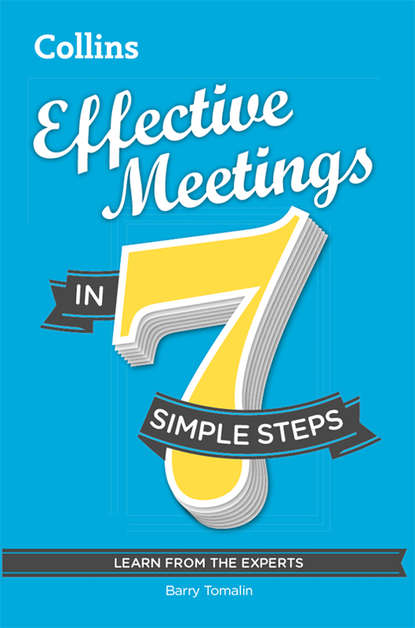По всем вопросам обращайтесь на: info@litportal.ru
(©) 2003-2024.
✖
Effective Meetings in 7 simple steps
Автор
Год написания книги
2019
Настройки чтения
Размер шрифта
Высота строк
Поля
8 Make a note of those who would be absent or would have to leave early.
9 Prepare the agenda (see Step 2 (#u734fda59-ef65-5b6e-996b-23c6a0e9cbe1)).
How does this apply to you?
As the intern realised, organising a meeting is both a challenge and an opportunity. If you get the opportunity, how do you meet the challenge? First, find out what has been done before. Ask more experienced colleagues or your line manager.
Secondly, think of your own experience. If you’ve participated in meetings before, is there anything you can use? Thirdly, don’t worry about inexperience. This is an opportunity to learn. It’s also an opportunity to show you can take responsibility and show initiative.
Lastly, after the meeting, take time to reflect. What have you learned from the experience? What will you do, say, and above all, think in the future? Learning to reflect on your experience and learn lessons for the future is one of the most important things you can do as an employee.
Key take-aways
Think about the things you will take away from Step 1 (#u93cc3143-ad9e-5a82-b563-f08bdabb4e98) and how you will implement them.
Step 2 (#ulink_5ef5fe9e-312f-5331-baf4-381fa1d2960e)
PREPARE USEFUL DOCUMENTS (#ulink_5ef5fe9e-312f-5331-baf4-381fa1d2960e)
‘Whoever controls the minutes, controls the meeting!’ — UK finance manager
Five ways to succeed
Always have an agenda.
Communicate the aim and objectives.
Organise the discussion documents for the meeting.
Know how to present your own ideas.
Take and present minutes to suit the meeting.
Five ways to fail
Assume the meeting can run by itself.
Waste time by not organising/attaching discussion papers.
Fail to ask someone to take the minutes.
Write down what everyone says and then try to reproduce it.
Forget to check minutes before circulation.
Good meetings depend on planning and successful planning depends partly on good documentation.
Four key documents will contribute to a successful meeting. They are:
The invitation
The agenda
Supporting papers and discussion documents
The minutes
The invitation makes sure you get the right people in the right place on the right day at the right time.
The agenda is your roadmap to success. It is the path to meeting the goals and objectives of your meeting. It ensures you clarify your meeting objectives and it identifies the process you need to go through to achieve them with the relevant stakeholders.
The supporting papers and discussion documents provide the necessary background to any discussion, but need to be presented in an unambiguous and accessible way.
The minutes are not just a record of the meeting. They are an action plan going forward.
Clear, relevant and action-oriented action points provide the platform for the next steps.
There should be a clear progression from the agenda to the minutes. The order of the minutes should reflect the order of the agenda and should clearly relate to the subject headings and issues raised in each item. If it doesn’t, you risk confusion.
The invitation
When you prepare an invitation, you tell attendees about the meeting: where they need to go, what date and what time.
Sounding pro: Meeting invitations
Here’s an example of an invitation:
To:
From:
Re: Team meeting
Dear Colleagues,
We are holding two meetings in May to discuss reorganisation of the department. It is extremely important that everyone in the team attends. We are proposing two dates: May 17
or May 24
at 1 p.m. in the canteen. Please let me know by May 6
which date or dates you are available for.
I look forward to hearing from you. Thank you.
Sara Leboeuf
HR Manager





